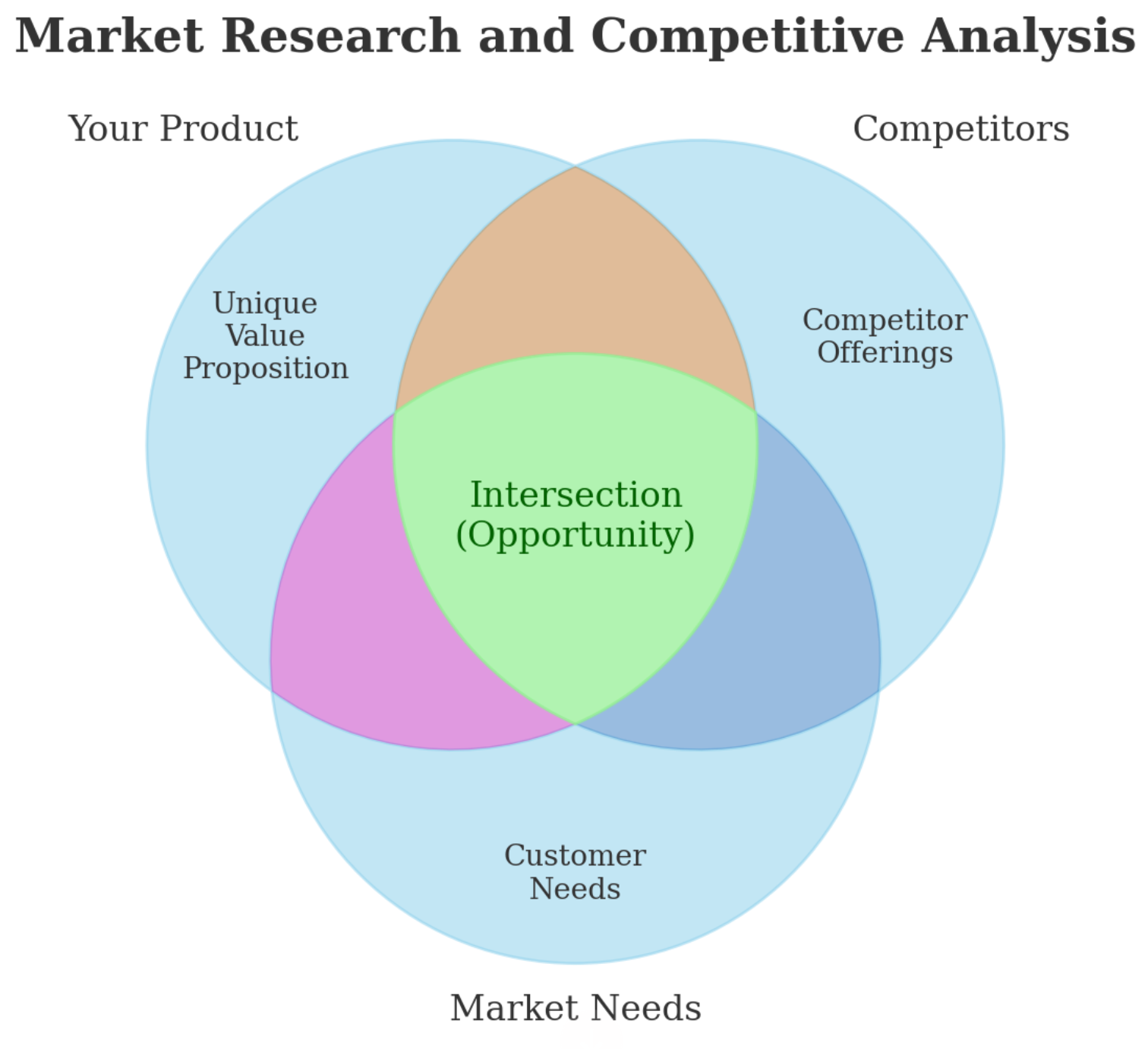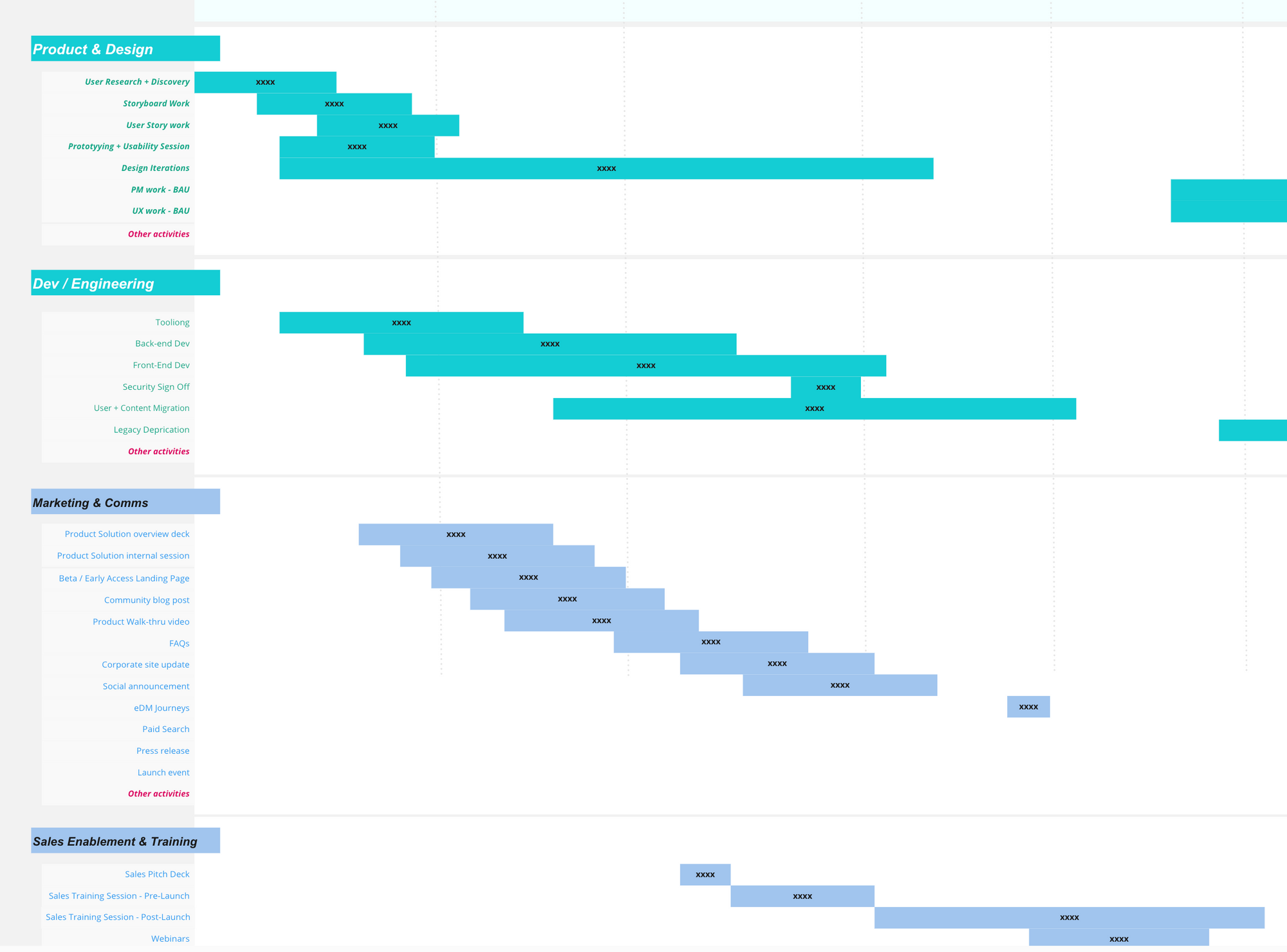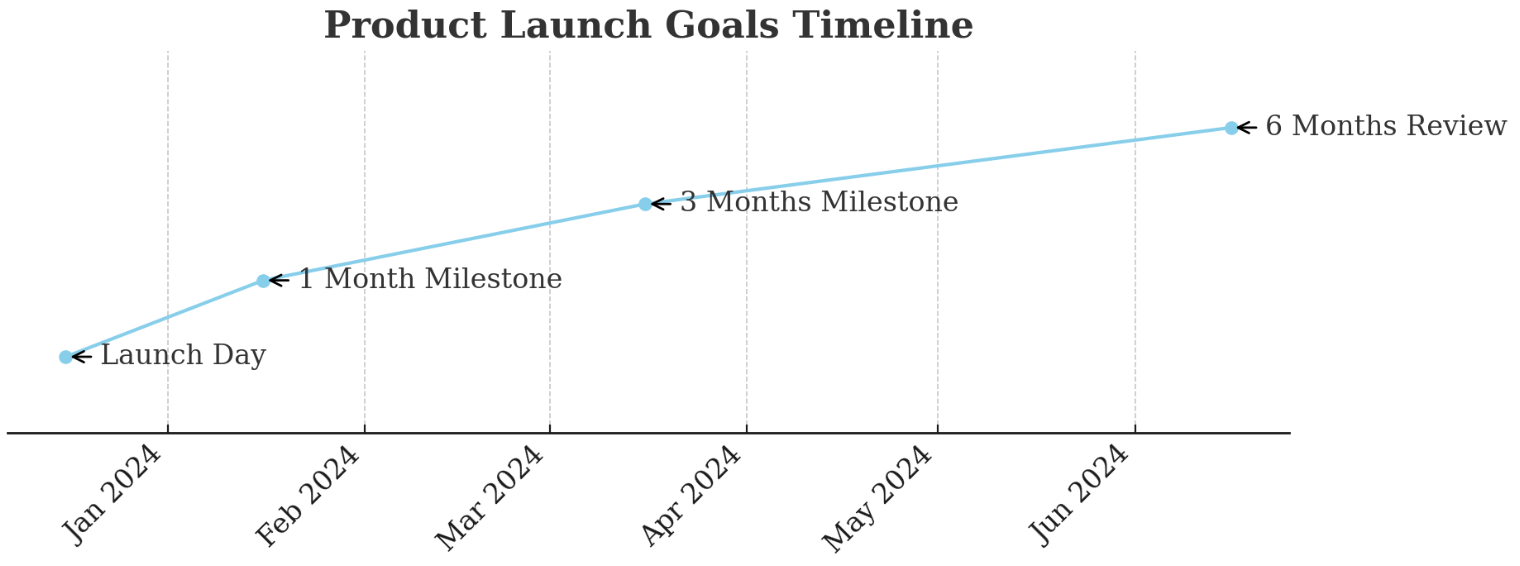Launching a new product is an exciting time, but also one that requires careful planning and execution. With the right preparation, you can set your product up for success from the very start. This comprehensive guide will walk you through the entire launch process step-by-step.
Before diving into the tactical steps, it's important to ground yourself in the key principles that set great product launches apart:
- Know your audience - Connect deeply with their needs and pain points. Design for them.
- Solve real problems - Offer a compelling solution to struggles they face.
- Plan meticulously - Map out detailed workflows for each launch activity.
- Execute precisely - Flawless coordination is paramount for impact.
- Learn and optimize - Gather feedback. Improve immediately and after launch.
Follow the launch blueprint below, anchored in these principles, to systematically build momentum and exceed your key business metrics right off the bat.

Step 1: Market Research and Competitive Analysis
Understanding Your Market and Identifying Opportunities
The foundational step is understanding the landscape you'll be launching into.
- Conduct customer interviews - Directly engage with your target customers. Learn about their everyday challenges. Empathize with their experiences to unlock insights.
- Profile your ideal customer - Create a detailed customer persona combining demographics, behaviors, frustrations, and needs. Know exactly who you are serving.
- Analyze competitors - Identify existing and upcoming solutions. Study their product features, messaging, pricing, and more. Find strategic gaps.
- Confirm your value proposition - Clarify the unique value you provide with hard evidence backing it up. State it convincingly.
This upfront research will reveal the precise customer needs your new product can satisfy and gaps in the market to position it competitively.

Step 2: Developing Your Product Launch Goals
Setting SMART Goals for Your Launch
With a solid understanding of your launch environment, next create measurable goals you can later track progress against.
- Outcome-based - Set specific targets for revenue, users acquired, retention, and other key metrics.
- Realistic yet ambitious - Challenge your team with aggressive but viable benchmarks given research insights.
- Milestones - Outline indicators of progress to hit at launch, 1 month out, 3 months out, and beyond.
Document your assumptions and models behind the targets - they will guide decisions throughout preparations. Revisit and adjust goals as needed based on new learnings.
Laser focus on hitting the numbers that matter most in this initial window - they could determine long-term success.

Step 3: Building Your Marketing Mix
Choosing the Right Channels and Tactics for Your Audience
With goals set, concentrate on the messaging and mechanisms to reach those targets.
- Map the customer journey – Outline touchpoints during awareness, consideration, acquisition, and beyond. Meet them where they are already actively looking.
- Clarify positioning – Refine messaging and brand voice tailored to resonate with each point in the funnel. Consistency across channels drives retention.
- Select promotional channels – Determine the highest potential avenues - SEO, paid ads, email, social, and partnerships - based on audience research. Prioritize 1-2 for launch.
- Create & schedule content – Develop website pages, ads, emails, and posts showcasing launch details. Queue them up to coordinate with availability.
- Set marketing KPIs – Define channel-specific metrics like click-through rate to optimize during launch. Instruments success per channel.
Synchronizing your messaging and campaigns creates an omnichannel launch experience that converts visitors into loyal users.
Step 4: Creating Engaging Launch Content
Tips for Content Creation Across Different Platforms
Compelling launch content builds excitement and urgency around your new product. Adapt style and formatting for each channel your customers actively engage on.
🚀 Website landing pages - Showcase key features and benefits upfront. Use visuals and multimedia to demonstrate value. Add testimonials and trust indicators. Strong, scannable copywriting.
🎥 Explainer videos - Create a 1-2 minute video quickly highlighting your solution to their problem. Add some personality. Host natively on platforms plus landing pages.
📝 Blog posts - Expand on popular search queries and pain points you solve. Entice readers with in-depth advice. Link prominently in other materials back to the website.
🐦 Social media updates - Share launch announcements, discounts, and access to new features. Mix in related visual content. Engage followers.
✉️ Email sequences - Build anticipation pre-launch with a collection story. Offer exclusive access and perks for subscribers. Promote content.
🤝 Co-marketing - Partner with influencers or brands serving the same audience to tap into their following with launch collateral.
Memorable launch content distributed across channels kick starts awareness and sets your brand voice. Adjust based on performance.

Step 5: Coordinating Your Launch Timing
Aligning Your Launch with Market Trends and Events
Launch timing can dramatically amplify or dampen your rollout if not deliberately aligned with your industry dynamics and customer behaviors.
- Market seasons - Plot your launch against sales cycles, holidays, annual events, and more. Introduce before upticks to capture budgets.
- Competitor moves - If major brands are coming out with releases, position contrasts to stand out or delay to avoid noise.
- World events - Monitor large conferences or regulatory changes you can build buzz around – or postpone the launch to prevent being overshadowed.
- Web traffic trends - Analyze seasonality across marketing channels to launch when engagement peaks from your audience.
- Internal roadmaps - Ensure operational capacity by mapping dependencies of product, sales, support, etc. to handle incoming demand.
Meticulously plan launch timing based on these insights for ideal customer reception and lighter competition on day one. Have contingencies for moving date if needed.
Step 6: Preparing for Launch Day
Final Checks and Preparations for a Smooth Rollout
With your countdown now only days away, conduct final preparations to confirm flawless launch execution.
☑️ Review launch goals – Audit progress on goals set for launch day metrics. Adjust budgets/projections if targets are unmet.
☑️ Inspect product & content – Rigorously test all customer-facing touchpoints one last time. Fix bugs. Enhance confusing areas.
☑️ Confirm messaging – Verify consistency across channels and collateral. Refine language based on the latest research learnings.
☑️ Ready operations – Scale up infrastructure, staffing, and processes to handle anticipated new traffic. Set up dashboards to monitor KPIs.
☑️ Enable teams – Rehearse launch events with cross-functional teams. Empower them to make judgment calls swiftly.
☑️ Communicate launch plan – Share game plans across the organization and set proper expectations on goals and strategies pursued.
Carefully finalizing launch preparations minimizes the risk of issues and keeps everyone aligned on responsibilities once live.
Step 7: Launch Execution and Real-Time Adjustments
Managing the Launch and Responding to Feedback
When launch day arrives, focus intensely on flawless execution while gathering customer input to optimize every channel.
- Fix issues immediately – Have technical leads actively resolve any emergent bugs or setup issues instantly.
- Monitor closely – Track launch KPIs in real-time against your pre-defined targets using agile data dashboards.
- Talk to customers – Engage new users directly via chat/calls to understand their experience and address concerns quickly.
- Fine-tune messaging – Tweak language or visuals of underperforming launch content based on user feedback.
- Adapt campaign budgets – Shift budgets from poor-converting channels to better-performing ones per the above insights.
Maintaining a maniacal focus on addressing launch issues promptly and improving conversion pathways is imperative to delivering an exceptional first experience that hooks users in.

Step 8: Post-Launch Analysis and Follow-Up
Evaluating Success and Planning Next Steps
After an intense launch, take time to assess results and capture learnings to feed future growth comprehensively.
- Review KPIs - Analyze final launch metrics against your predefined targets to understand business performance fully.
- Collect feedback - Conduct customer surveys, interviews, and focus groups to capture experience and product feedback from the launch.
- Document learnings – Catalog key takeaways, missed opportunities, and action items across strategy, product, content, and more while launch details are still fresh.
- Plan iteration cycles – Using the above insights, set quarterly cycles for product and content improvements to exceed customer needs.
- Identify new markets – If certain segments overperformed, explore tailored messaging to targeted expansions into similar markets.
- Celebrate wins – Reward your team for successes and contributions that shaped an impactful launch.
Continuously learning from your launches and users' compound growth cycles and transforms one-time launches into platforms powering your business’ next stage.
Executing a systematic product launch process dramatically increases the odds of entering the market effectively. Sprinting through these 8 steps guides you to know your customers deeply, strategically position your solution, and coordinate excellent execution to exceed all goals. Use the blueprint above to establish solid momentum out the gates and build the foundation for ongoing customer growth.
FAQ
What is the most essential first step when planning a product launch strategy?
The most critical first step is conducting in-depth market and customer research. It is vital to truly understand your target audience - their demographics, behaviors, frustrations, and needs. Techniques such as customer interviews and persona development reveal key insights that should anchor your entire strategy. Competitive analysis also contextualizes gaps in the market. This upfront research uncovers the precise problems that customers want resolved so you can position your solution around meaningful value.
What elements comprise an effective marketing mix for launching to your audience?
An omnichannel marketing mix considers multiple avenues tailored to your customers' journey. Key components are 1) clarifying your messaging and positioning statements that will consistently communicate your value across initiatives. Then determine 2) the right distribution channels like digital ads, email, organic search, and partnerships based on proven influence with your audience. Lastly, 3) create varied, engaging content formats designed distinctly for each channel while aligning back to your central positioning. Coordinating these strategic elements develops an integrated launch campaign.
How early should you start planning a successful product rollout?
Ideally, begin structuring a detailed launch plan 9–12 months before the target release date, especially for brand-new products. There are always unforeseen complexities across product development, feature scope, hiring, and coordination. Building additional lead time ensures you can conduct essential upfront market research, set realistic success metrics, creatively develop launch assets and content, explore partnership opportunities, and line up internal stakeholders. Phased planning also allows testing elements early to optimize roll out.
What are the risks of a poorly timed product launch?
The timing of your debut profoundly impacts how well your solution resonates. Poor timing risks aligning with competitive product announcements that drown you out or announcing during seasonal lulls where your audience is not active and engaged. Conducting traffic and industry trend analysis mitigates this. Also consider internal roadmaps to ensure operational readiness - launching too early before capacity is lined up or too late past projections damages buyer sentiment. Carefully consider timing based on these factors so market reception best amplifies your introduction.
How do you efficiently allocate budgets across launch marketing channels?
Best practice is to devote 70-80% of launch budgets to just 1-2 proven high-performing channels for your product type and audience. This focuses impact where you've confirmed the greatest returns. Allocate the remaining budget to supplementary channels worth testing such as referrals and organic, which have negligible hard costs. The specific channel mix should directly align to your audience research. Always amplify efforts where clear traction emerges while promptly pulling back on poor returns.
What metrics indicate a product launch is effectively connecting with customers?
Key indicators of launch success are customer sign-ups exceeding projections, strong traffic to your website, high percentage browsing key site pages like pricing and features, increased branded search volume, surging trial sign-ups, and low bounce rates. These signal you compellingly messaged the value proposition. Powerful metrics that customers have engaged beyond surface level are time spent actively using the product, repeat usage sessions, referrals sent, and customers proactively reaching out with feedback. Track these live to assess launch impact.
How can you encourage customers to provide feedback immediately after launch?
The first cohort of engaged users provides invaluable directional input that can rapidly improve product-market fit. Tactfully request their feedback through in-app surveys on key pages, email follow-ups, chat discussions, pop-up widgets, or feedback buttons. Offer small incentives for completing like credits or discounts to encourage volume. Ask pointed questions on their usage challenges, desired enhancements, and suggestions. Personally engaging via calls/messages with power users questions their end objectives. Finally, monitor support cases and social sentiment. Feedback acceleration shapes launch products.
What are strategic ways to incentivize sales teams to support a new product launch?
Sales plays an integral role in translating launch interest into committed customers. Incenting them appropriately ensures sufficient focus on your new solution. First, provide intrinsic motivation by educating them on the product value proposition and how it solves customer pain. Enable through complete sales collateral detailing competitive differentiation. Split commission rates favorably for the product launch duration to underscore priority. Offer incremental bonuses for deals that include it or for exceeding usage targets. Public leaderboards combining these signal peer accountability. Lastly, apply behavioral reinforcement with rewards and recognitions for top talent selling the launch product.
How do you sustain momentum beyond the initial product launch phase?
A robust product launch plan incorporates integrated processes for maintaining post-debut velocity. First, instrument closed-loop analytics that trigger defined workflow enhancements when usage dips. Plan regular release cycles - whether quarterly or bi-annually - that consistently re-engage users with new features/content responding to their feedback. Facilitate a customer advisory panel for ongoing guidance. Look for adjacent customer segments to sustainably expand into. And provide customer success guidance helping new users see more business value. Building these sustained elements into launch plans compounds growth cycles over time.






